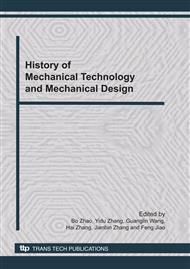p.347
p.351
p.355
p.359
p.363
p.367
p.371
p.375
p.380
Study on Surface Quality of Al/SiCp Composites with Ultrasonic Vibration High Speed Milling
Abstract:
Al/SiCp composites with excellent physical and mechanical properties are applied widely in the aerospace, automotive, national defense, electronics and other fields. High content and high hardness SiC particles lead to poor machinability and that further application is restricted. Surface microstructure and surface formation mechanism of Al/SiCp composites were studied under condition of ultrasonic vibration milling and conventional milling. The experimental results show that machined surface had the same defects, but SiC particles were mainly direct sheared in ultrasonic milling different from the conventional milling, the roughness (Ra) of the surface generated in the ultrasonic vibration milling was smaller. At last, the formation mechanism of surface topography in the ultrasonic milling was analyzed. The research indicated that ultrasonic milling could obtain better surface quality than conventional milling and with high efficient.
Info:
Periodical:
Pages:
363-366
Citation:
Online since:
November 2010
Authors:
Price:
Сopyright:
© 2011 Trans Tech Publications Ltd. All Rights Reserved
Share:
Citation:


